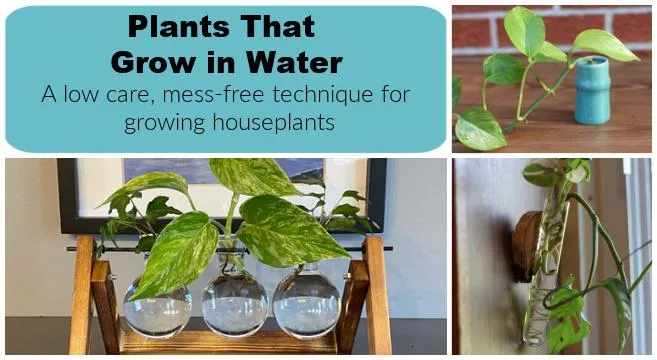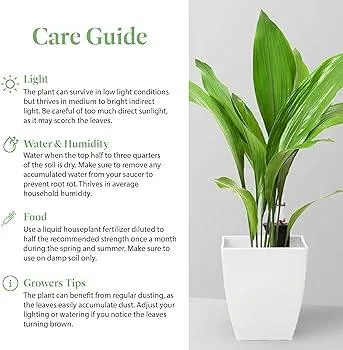The Complete Guide to Growing Ivy Indoors
As indoor plants become more and more popular, many homeowners are looking for easy-to-care-for greenery that adds visual appeal to their living spaces. Ivy plants are an excellent choice for beginner plant parents, as they tend to thrive even with minimal care. Here are the answers to all your questions regarding ivy plant care indoors.
Choosing the Right Ivy Variety
There are many different types of ivy available, so selecting one suited to indoor conditions is important. From my experience, English ivy (Hedera helix) is one of the hardiest and most forgiving for interior spaces. It grows well in low to medium light and can tolerate some neglect when it comes to watering. Another good option is grape ivy (Cissus rhombifolia), known for its beautiful oval leaves and ability to climb walls or hang from pots. Pothos (Epipremnum aureum) is also incredibly low-maintenance—I have one that’s been going strong for over 5 years with nothing more than occasional water!
Potting and Soil Requirements
- Use a container with drainage holes to prevent root rot from overwatering. Terra cotta and plastic pots both work well.
- Standard potting soil mixed with perlite or vermiculite is suitable for most ivy varieties. The added aeration helps drainage.
- Repot annually in early spring if the plant has outgrown its container, disturbing roots as little as possible.
Lighting Tips
Ivies generally prefer medium to low light conditions indoors. Here are some pointers:
– East or west-facing windows provide the brightest light without scorching leaves. South windows may be too hot.
– If light levels are low, rotate the plant every few days so all sides receive some sun.

– Gradually adjust ivies taken from low indoor light to brighter outdoor spots in partial shade. Sunburn can occur if lighting changes are too abrupt.
– Most ivys can even survive in shadier nooks, though growth may be slower. Experiment to see what works best for your home and plant!
Watering Guidance
When it comes to ivy watering indoors, the motto is “moderate but infrequent.” Here are some steps to follow:
- Allow the soil to dry out slightly between waterings, until the top inch is dry to the touch. This prevents roots from sitting in soggy soil.
- Water thoroughly when the soil is dry, making sure excess drains from the drainage holes. Ivy leaves dropping could signal overwatering.
- Mist foliage regularly to increase humidity around the plant. But avoid getting leaves wet if possible to reduce risk of fungal issues.
- Adjust watering needs according to the season, pot size, and growth stage. Water less in fall/winter when ivy growth slower.
Fertilizing and Pruning Practices
During the main growing season from spring to early fall, you may wish to fertilize an ivy indoors every few months. Dilute liquid houseplant fertilizer to half or quarter strength and water as usual. As for pruning, ivies grown for foliage can be lightly shaped and thinned throughout the year. I like to remove any non-variegated “reversion shoots” that appear to maintain plant appearance. The stems are also easily pruned if your ivy starts getting overly leggy.
Dealing with Pests and Diseases
Most common issues for indoor ivy include mealybugs, spider mites, and scale insects. From my experiences, here are some natural remedies to try:

– Isolate the infected plant and check others nearby as pests can spread. Thoroughly inspect leaves, stems, and undersides regularly.
– Mix a few drops of Dish soap (I use Dawn) in a spray bottle of water and spritz affected areas. The soap smothers pests.
– Wipe leaves with cotton balls dipped in rubbing alcohol to kill pests on contact.
– Neem oil diluted with water also works well as a preventative or treatment.
– As a last resort, contact insecticides labeled safe for houseplants can be used. But prevention through monitoring is best.

If lower leaves yellow and drop despite good care, the plant may have a fungal or bacterial disease. Remove any diseased parts and improve air circulation/humidity control. Some folks swear by a little cinnamon or sulfur powder on the soil to discourage issues. And watch your ivy’s toes—check the drainage holes aren’t blocked to prevent root rot. With a bit of TLC your ivy friends will thrive!
Ivy Plant Care Indoor – The Quick Facts
| Type | Light Needs | Water | Soil | Humidity |
|---|---|---|---|---|
| English Ivy | Bright Indirect Light | Allow Soil to Dry Slightly | Well-Draining Potting Mix | Moderate, Mist Leaves |
| Swedish Ivy | Low Light | Water When Topsoil is Dry | Moisture-Retaining | High, Trailing Plants |
| Cast Iron Plant | Bright Light | Let Soil Dry Before Watering | Well-Drained, Allow to Dry | Low to Moderate |
| Peperomia | Bright Indirect Light | Water When Topsoil is Dry | Rich, Moisture-Retaining | Moderate to High |
FAQ
-
What kind of sunlight do ivy plants need?
Ivy plants like bright, indirect sunlight. So basically put them in a spot with lots of light coming in through a window, but not in direct sun. Too much sun will kind of burn their leaves.
-
How often should I water an ivy plant?
Ivy plants don’t need a whole lot of water. Water them when the top inch or so of soil feels dry. So around once a week is usually good. However, in the summer when it’s really hot you may need to water them a little more, like every 5 days. On the other hand, in winter when the temperatures drop you can water them less, maybe every 10 days or so. The key is to let the soil dry out a bit between waterings.
-
What kind of soil does an ivy plant like?
Ivy plants do best in well-draining potting mixes. You want a soil that doesn’t stay soggy after watering. A good choice is a cactus and succulent potting soil, or you can kind of mix your own by combining equal parts potting soil, perlite or gravel, and organic material like compost. You want the soil to retain some moisture but drain quickly. Avoid soils that remain wet for long periods.
-
How do I prune an ivy plant?
Pruning ivy plants is pretty easy. Just use clean pruners or scissors. Cut back leggy vines that have grown too long by about half their length. You can also shape the plant by pruning individual leaves. This encourages bushier growth. Be careful not to cut into the main stems though, as that may harm the plant. Anyway, prune throughout the year to keep the ivy looking neat.

-
Do ivy plants need fertilizer?
Fertilizing ivy plants isn’t totally necessary, but it won’t hurt them either. You can use a dilute balanced liquid fertilizer, like a 10-10-10 formula, two or three times during the growing season in spring and summer. Ivy plants are pretty low maintenance overall and will grow nicely without extra nutrients. So only fertilize maybe every few months if that. No need to overdo it and risk “fertilizer burn.” Just follow package instructions for dilution.
-
Is there anything that commonly damages ivy plants?
A few pests might potentially bug ivy plants. Spider mites can sometimes be a problem, spinning little webs on the leaves and sucking out the plant’s juices. Mealybugs are another occasional pest – they’re sort of fluffy white bugs that feed on sap. However, ivy plants are pretty resilient. Unless there’s a major infestation, these pests likely won’t do too much harm. Just wipe off any bugs you spot with a cotton ball dipped in alcohol. On the other hand, overwatering poses more of a risk than any pest. Too much moisture can cause root rot.
-
Are there any plant diseases I should watch out for with ivy?
Most ivy plants are pretty disease-resistant. But perhaps the biggest disease threat is leaf spot, which appears as brown marks on foliage. It’s usually caused by too much moisture and not enough air circulation around the plant. To reduce risk of leaf spot, make sure your ivy gets enough sunlight and air flow. Also prune off any diseased leaves. Otherwise, ivy plants are pretty low maintenance and rarely have many diseases to worry about. Just keep the growing conditions appropriate and it should stay healthy.
